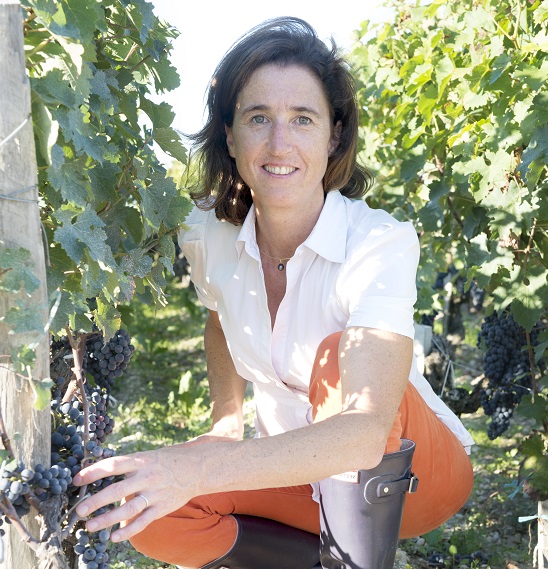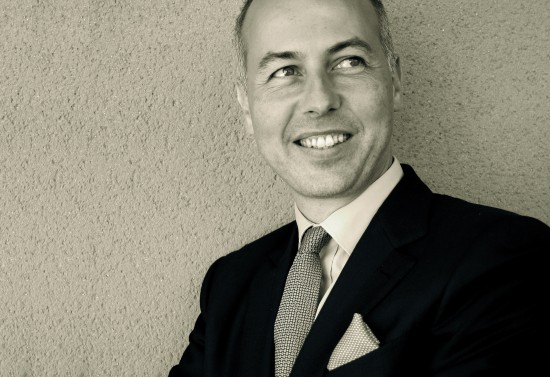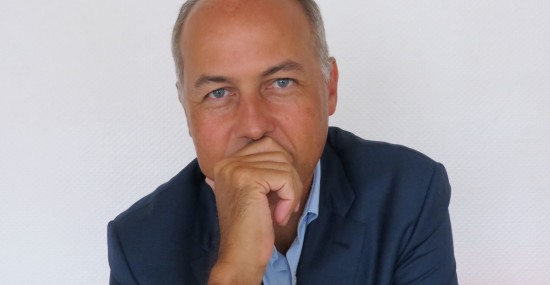To initiate the coverage of the 2014 harvest in Bordeaux, here is a first interview with Marjolaine MAURICE DE CONINCK who is managing Château Marquis d’Alesme and about whom wine critic Michel Bettane has recently written in the French magazine “L’Express”: “By joining Nathalie Perrodo and her brothers to manage Chateau Labégorce and the 1855 classified Growth Château Marquis d’Alesme, Marjolaine Maurice de Coninck works quite remarkably to achieve high expectations. With a great experience in Saint-Emilion, the agronomist and oenologist infuses a new spirit in Margaux. She speaks about vines and not acres, she also talks about the importance of each gesture, a true “right bank” vision.
How would you describe this year 2014?
Marjolaine MAURICE DE CONINCK:2014 is a good illustration of the memory of the vines. 2011, 2012, 2013 vintages gave low yields while 2014 – driven by favorable weather conditions at the time of the flowering in particular and a good development of the plants – is a promise for a generous vintage.
Did it give you some relief?
MMDC: Yes and no. Early in the season, we had to be cautious in each of our interventions. After three difficult years, it is clear that few of us wanted to limit the potential of this harvest.
You have great expectations for Marquis d’Alesme. How do you reach this level of details in your vineyards?
MMDC: I do have high expectations for Marquis d’Alesme and one of them, obviously, is to achieve a natural balance between the terroir, the quality and the quantity produced. To succeed in this mission, you need a great vineyard of course, but it is also necessary to finance and orchestrate all the detailed works in a timely manner.
You talk about attention to every detail. Could you tell us more, specifically in the vineyards?
MMDC: I put a lot of importance on observation, it allows us to understand, to adjust and to improve the efficiency of our actions. It is also about rethinking the way things were done historically, for example giving to women a work done traditionally by men because women are sometimes more patient. On the other hand, I’m quite convinced that the know-how of our team is essential. I made the choice to invest in ongoing training for our winemakers (especially regarding the vine pruning), in order to better understand our goals and the importance of adapting the work on each vine, but also to share the feeling of pride in a job well done. In this configuration, we can say goodbye to the “paid by task” work. My preference is for hourly paid work, with a single focus: Quality.
You told us that the wine estate management required a constant reassessment. Could you explain?
MMDC: Each decision is a risk that we are willing to take. For example, the time for action during the high season is quite short for each plot. We have more than 80 people in the vineyards at that time, between seasonal staff and the team of the château: this is a large boat to drive. Every day, you must ask yourself the same question: “Now, what should I do? “. This year, in mid-veraison, we understood that the summer would not provide all that was required for a full maturity at the end. We therefore decided with the family owner to focus on quality by reducing the load on each vine. Once all this painstaking work is done, once all these risk-taking decisions were considered, are we certain to succeed? No, Mother Nature always ends up having the last word…
At Chateau Marquis d’Alesme, Marjolaine MAURICE DE CONINCK is in charge of one of the most exciting architectural project in France: Watch the Film
(Write to VitaBella info@vitabella.fr)



